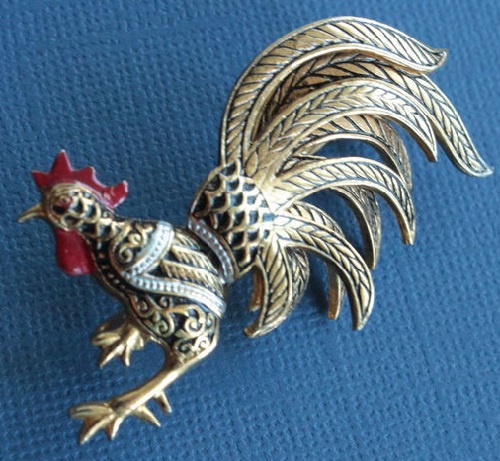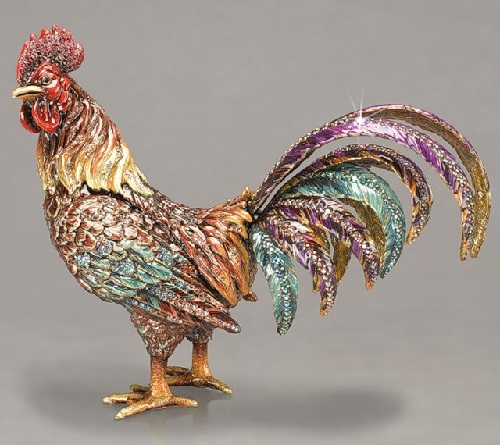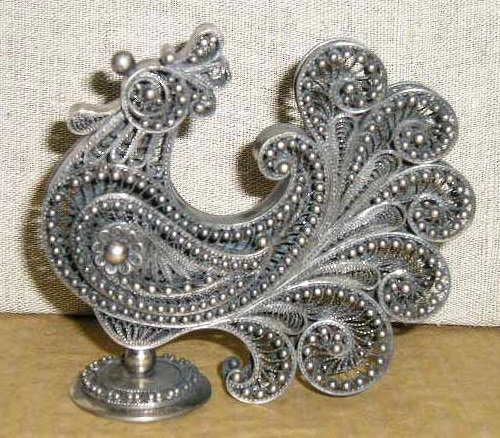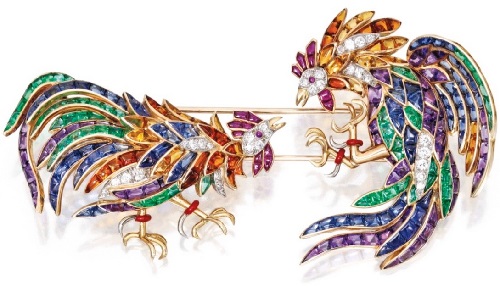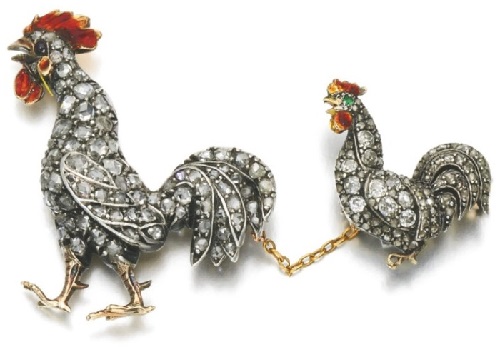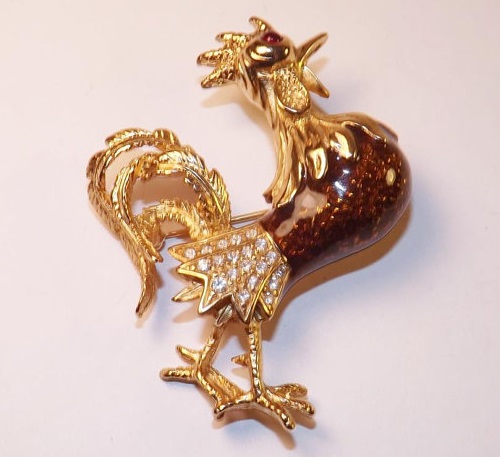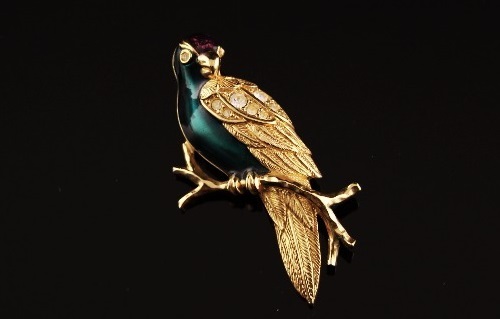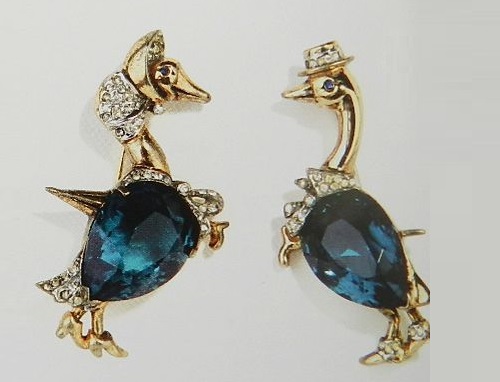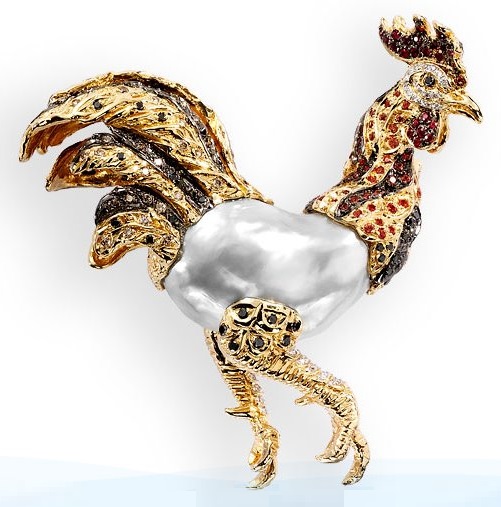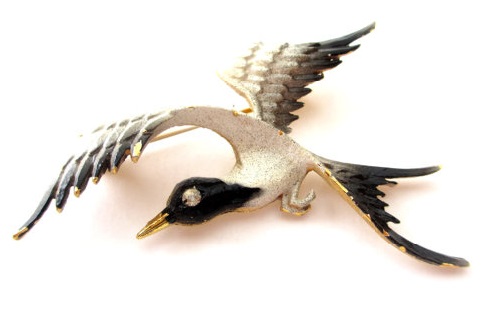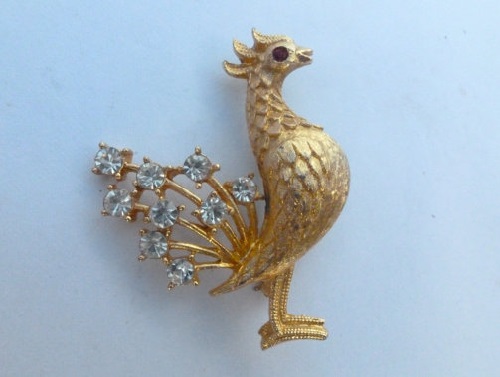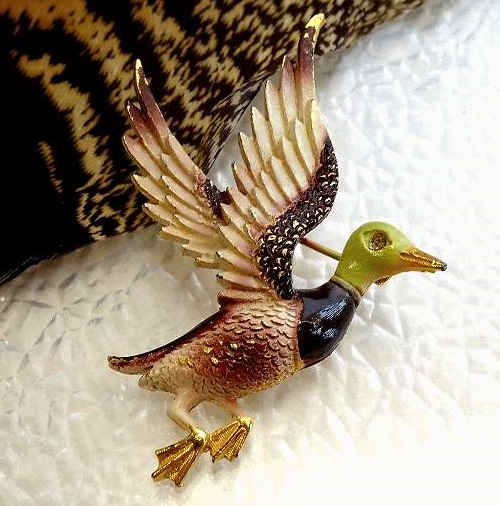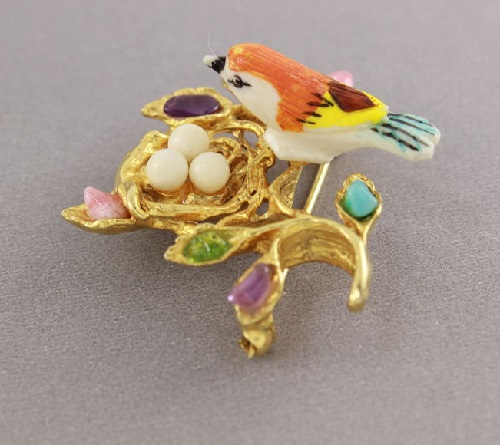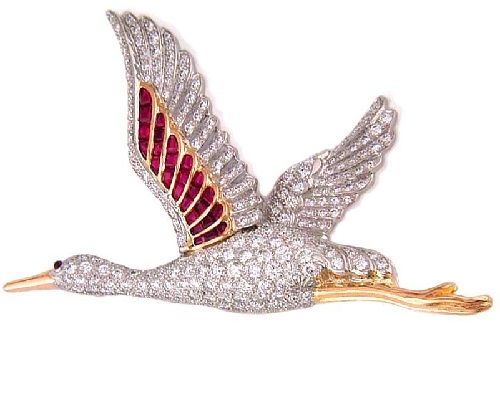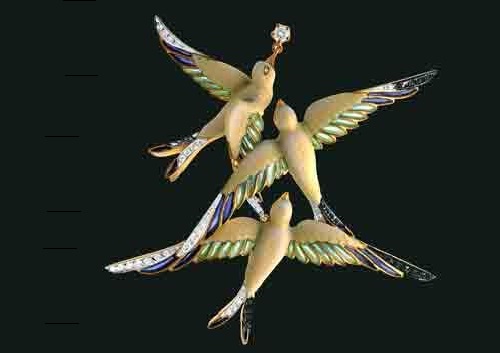Farm bird Apotropaic magic
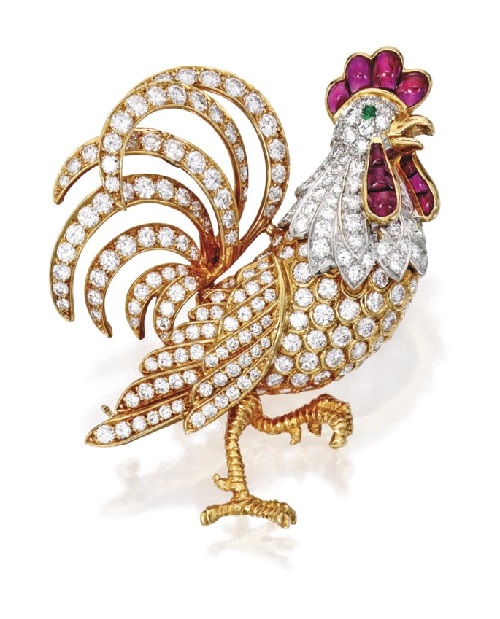
18 Karat Gold, Platinum, Diamond and Ruby Rooster Brooch, Oscar Heyman & Brothers. Farm bird Apotropaic magic
Farm bird Apotropaic magic.
Many birds were seen as being endowed with apotropaic magic. Ancient Greeks and Romans believed that the image of a chicken – amulet against the evil eye, as well as a chicken egg. Egg amulet is known in almost all cultures, stone eggs are found even in before-Neolithic graves. In Europe, as a talisman and amulet since ancient times were used the so-called bone desires – V-shaped chicken or turkey breast bone, both present in the form of pendants, and brooches, trinkets of gold and silver.
A variety of necklaces, charms with golden ducks found in ancient Egypt, and later – in the Hellenistic and Eastern world. A pair of mandarin ducks “Yuan-yang” symbolized and also served as a talisman of conjugal life in China. Fluffy tail of the wild duck was attached to the earrings of Tajiks and Uzbeks, in addition, in Central Asia, Apotropaic magic had feathers and claws of birds, embodying fertility: dove, pheasant, rooster.
According to Celtic mythology, cock is a symbolic animal. Possibly because of its harsh call, the cock protected against danger that might approach from an unanticipated direction. This power was especially strong in March. Black cocks were for good luck, while white cocks were just the opposite.
Cock and the Pearl, The Aesopic fable.
A cock was strutting up and down the farmyard among the hens when suddenly he saw something shining amid the straw. “Ho! ho!” he said.“That’s for me.” He soon rooted it out from beneath the straw. The shiny object turned out to be a pearl that by some chance had been lost in the yard. “You may be a treasure,” said Master Cock, “to men that prize you, but for me I would rather have a single barleycorn than a peck of pearls.” Moral: Precious things are for those who can prize them.
Farm bird Apotropaic magic
If one looks up at the steeples of churches and cathedrals in Europe, the most common figure at the apex is that of a rooster. According to belief, in the past that the devil could carry out his evil work only under cover of darkness and had to retreat to his own realm at the first light of day. Spotting the first light of the sun and crowing loudly rooster lets the devil know that his time has expired. While at the same time letting the people know that it is safe to venture out into the day.
Goose had mythological and symbolic significance to the Celts. The barnyard goose, a notoriously aggressive being, was seen as an image of the warrior divinities, both male and female. Stone geese lined the temples of Gaul, while Brittany produced bronzes of war goddesses with goose-head helmets.
